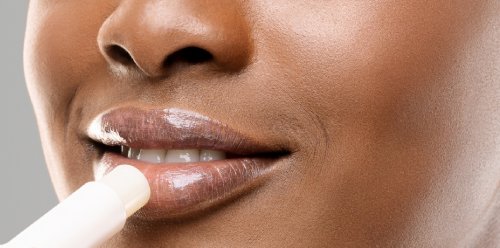Dermatological Inflammation
How AAGP® could help break through current treatment barriers
Millions of people suffer with inflamed, uncomfortable skin. In fact, more than 1 in 4 Americans (26%) have at least one skin disease, according to the American Academy of Dermatology.
Inflammatory skin conditions are the most common dermatological issue, but researchers are exploring how AAGP© can help.

The causes of dermatological inflammation
There are many causes that can contribute to dermatological inflammation. Infection, allergens, or sun exposure can trigger rapid, acute inflammation, while chronic inflammation may be caused by immune system dysfunctions or even imbalances in the gut microbiome.
Aging, environmental factors, genetics, and trauma each can trigger an inflammatory response, posing a threat to skin cells. And diseases such as diabetes can cause chronic, non-healing wounds or ulcers, in which the damaged skin is trapped in a cycle of inflammation, leading to pain, infection, and even amputation.
The symptoms of dermatological inflammation
Depending on the cause, severity, and location of the affected area, skin inflammation can present a number of different symptoms:
- Burning
- Stinging
- Itching
- Redness
- Heat or warmth in affected area
- Scales
- Rashes
- Blisters or raised bumps
- Cracks
- Bleeding
- Ulcers
Treatments for dermatological inflammation
Treatments for dermatological inflammation vary depending on cause. Currently, common treatments include medications such as N-SAIDs (non-steroidal anti-inflammatory drugs) or corticosteroids. Other treatments include antibiotics, antifungals, or antihistamines, if the cause is determined to be an infection or allergen.

AAGP® as a potential solution
A synthetic solution like AAGP© could make a huge difference to people suffering from skin inflammation.
Imagine a molecule that can promote the acute survival of skin cells to aid in healing — after the fact. AAGP, with its anti-aging properties, has the potential to treat inflammatory skin conditions by actually healing cells that have suffered inflammation and damage.
We’re just scratching the surface of what this revolutionary glycopeptide can do. Its ability to promote cell survivability shows promise for its ability to repair damaged cells, and its synthetic nature could help put the cost of therapies within reach for many.
Treating inflammatory skin concerns with AAGP© could make relief more accessible and more affordable for more people, easing the burden of skin disease for millions.
ProtoKinetix research and clinical trials
Find out what we’ve learned so far about the impact AAGP® could have in the field of dermatology.
Market potential for dermatological inflammation
The global anti-aging cosmetics market is expected to grow from $39 billion in 2018 to $60 billion by 2026, according to Fortune Business Insights. Demand will be boosted by the increasing prevalence of skin-related problems in conjunction with technological advancements that make these products more powerfully effective.
Meanwhile, forecasts by Visiongain estimate the market for dermatology drugs to grow from $26 billion in 2018 to $36 billion by 2024. An increase in prevalence of skin disease is a major driver of this growth, but so is an increasing awareness of available treatments.
There is an exciting opportunity here to be part of our journey to provide relief and treatment to millions of people hungry for a solution.
2018 Market Revenue:
$26 Billion

2024 Market Forecast:
$36 Billion
Applications of AAGP® in Dermatology

Cosmetics
Environmental exposures such as sun and wind can affect how our skin ages, reducing elasticity, decreasing suppleness and causing wrinkles. AAGP®’s strong cell preservation properties could help extend the life of skin cells, reducing the signs of aging. In a global market that’s already nearing $400 billion in value, AAGP®’s potential application in creating the best anti-aging skincare in the cosmetics industry is cause for excitement.

Lip Balm
The sun’s rays don’t damage only skin — they can cause damage and inflammation for lips, too. AAGP® may hold the key to treating sunburned lips thanks to its unique ability to protect cells against inflammation. Join us as we explore the potential of a lip balm or treatment containing AAGP®.

Research Pipeline for Dermatology:
Inflammation protection
Research:
The most common dermatological issue is inflammation. This can cause chronic conditions like eczema or rosacea. Occasional rashes can also occur from exposures to natural or chemical agents and sensitivities.
Your skin is your largest organ. When it becomes inflamed, visible reactions can happen. Figuring out what’s wrong and getting your skin back to normal is hard enough without answering questions from family and strangers about what’s wrong with your skin.
We’re in the preclinical research stage of discovering AAGP®’s ability to protect skin from inflammation and are working hard to advance AAGP® to clinical skin trials.
UV radiation and burn recovery
Research:
Currently, we’re in the discovery phase to understand how AAGP® can help skin recover from UV radiation and burns. Ultraviolet light can damage proteins and DNA in skin cells. It can also produce inflammatory mediators that increase cell death or alter skin elasticity and color.
In our research, we’ve learned that AAGP® could protect human adult skin fibroblasts against high intensity UVA and UVC wavelengths, which suggest that AAGP mechanisms of cell protection could both protect and renew healthy skin. We’ll soon be moving on to the proof of concept and into preclinical stages of research.
Explore other Industry applications for AAGP®
Support our research into healing skin inflammation, while also supporting your financial future. Contact your broker or reach out to our team at ProtoKinetix to learn about potential investment options.


